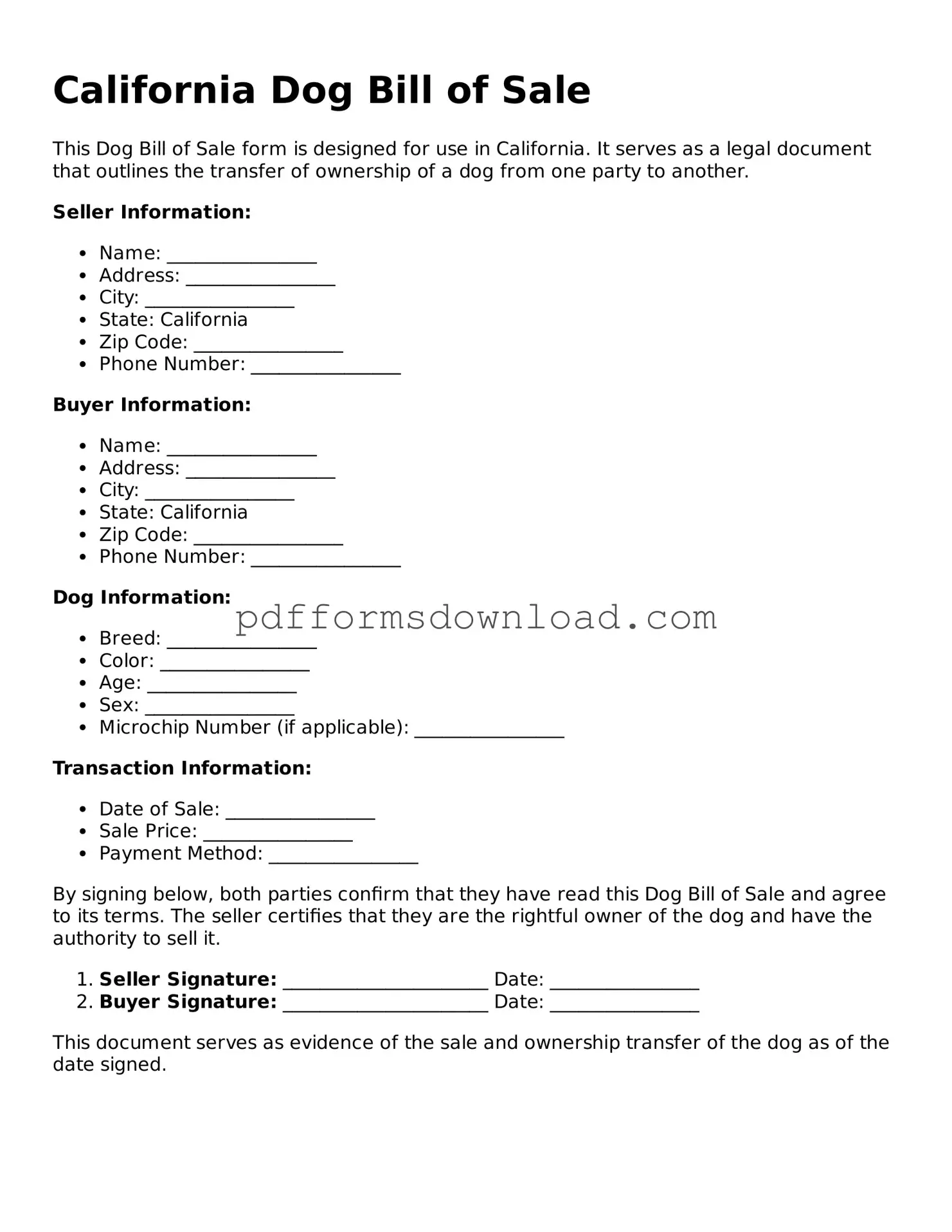What is a California Dog Bill of Sale?
A California Dog Bill of Sale is a legal document that records the transfer of ownership of a dog from one person to another. This form serves as proof that the seller has relinquished ownership and that the buyer has accepted responsibility for the dog. It is important for both parties to have a clear record of the transaction.
Why do I need a Dog Bill of Sale?
The Dog Bill of Sale is essential for several reasons. First, it provides legal protection for both the seller and the buyer. It helps prevent disputes over ownership in the future. Additionally, having a written record can be useful for registration purposes, veterinary care, and other responsibilities that come with dog ownership.
What information should be included in the Dog Bill of Sale?
The Dog Bill of Sale should include specific details such as the names and addresses of both the seller and the buyer, the dog's breed, age, color, and any identifying marks or microchip information. It should also state the sale price and the date of the transaction. Including any warranties or guarantees about the dog’s health can also be beneficial.
Is a Dog Bill of Sale required by law in California?
While a Dog Bill of Sale is not legally required in California, it is highly recommended. Having a written agreement can help clarify the terms of the sale and protect both parties in case of any future issues. It's a good practice to create one to ensure a smooth transfer of ownership.
Can I create my own Dog Bill of Sale?
Yes, you can create your own Dog Bill of Sale. There are many templates available online that can guide you in drafting a document that meets your needs. Just make sure to include all necessary information and ensure both parties sign the document to make it valid.
What if the dog has health issues?
If the dog has known health issues, it is important to disclose this information in the Dog Bill of Sale. Transparency is key in any transaction. The seller should inform the buyer of any existing health problems, and both parties can agree on whether to include any warranties regarding the dog's health in the document.
How do I transfer the dog's registration after the sale?
To transfer the dog's registration, the new owner should contact the relevant breed registry or local animal control agency. They will typically require a copy of the Dog Bill of Sale to process the transfer. It’s a good idea to check with the specific organization for their requirements.
What happens if I lose the Dog Bill of Sale?
If you lose the Dog Bill of Sale, it can be challenging, especially if a dispute arises over ownership. It’s advisable to keep a copy in a safe place. If you do lose it, you may want to consider creating a new document that both parties can sign, acknowledging the original sale.
Can I use a Dog Bill of Sale for other animals?
While a Dog Bill of Sale is specifically designed for dogs, similar documents can be created for other pets. The key is to ensure that the document accurately reflects the details of the animal being sold and the agreement between the parties involved.
Is there a fee associated with creating a Dog Bill of Sale?
Typically, there is no fee to create a Dog Bill of Sale if you draft it yourself. However, if you choose to use a lawyer or a professional service to create the document, there may be associated costs. Always consider your options and choose what best suits your needs.
